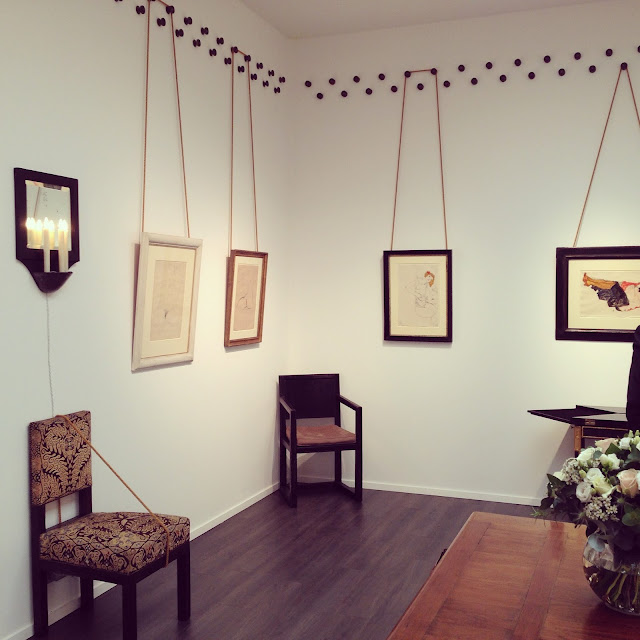As always, Frieze Masters was an elegant affair. Each stand was carefully curated and painted in delicate hues of charcoal, dove grey and white. Despite the regulated colour palettes of the walls, the fair couldn’t be accused of monotony given the juxtaposition of both classical and contemporary works composed before the millennium. With immersive installations like Gallery Hyundai’s Untitled (TV and Stone) and Helly Nahmad’s Mental Asylum imbued with opera music, there was an unexpected spotlight on conceptuality. I was particularly impressed by the efforts of multiple galleries to make their artwork multi-sensory as they combined both visual and aural experience. Inevitably we immersed ourselves in the curiosities of Frieze London too, but Frieze Masters was arguably more distinguished in terms of both caliber and aesthetic experience. Although, perhaps as intriguing as the works themselves were the swathes of art world glitterati, wandering its aisles in ceaseless black as if fashion week had never ended.
Given my fascination with the representation of female sexuality in art, I was captivated by Tom Wesselmann’s Great American Nude 31 at the Aquavella Gallery. With the symbolic Mona Lisa juxtaposing the erotic figure in the foreground, Wesselmann entwined elements of both classical and modern art in his celebration of the female nude. Illustrating the eclectic nature of Frieze Masters, this provocation was followed by a stroll in Netherlandish fields as we visited the Dutch Old Master dealer Johnny Van Haeften. Our host challenged the boundaries of the Old Masters by consolidating visual and aural stimulation within the music he commissioned to accompany Van Cleve’s Wedding Procession. As with the National Gallery’s offbeat Soundscapes exhibition, the audience stood hypnotized by the charm of the church bells, blowing wind and laughter. I was also taken with the Dutch painter Simon Pieterz Verelst’s kaleidoscopic Still Life of Flowers in a Case, reminiscent of the Fitzwilliam, Cambridge’s wildly romantic flower room.
As a fierce defender of Egon Schiele and his violent contortions, I was besotted with the collection of his works exhibited by the Richard Nagy gallery. As if we’d strolled into an ancient schloss, they’d adorned the walls of a makeshift Austrian dining room with the painter’s perverse studies of the female form. Continuing the figurative theme, we crossed into Marlborough Fine Art’s beautifully curated stand, which reminded us that the wonder of Frieze is the proximity of so many of the world’s leading galleries. Their intimate collection of Frank Auerbach’s expressionistic portraits aligned with Tate Britain’s critically acclaimed exhibition, almost challenging it. Having spent the morning inside the Elephant Hotel studio of the young British artists Jack Penny and Hugo Hamper Potts – both influenced by Auerbach’s aesthetic – I was all the more captivated by the intensity of his heavy brushstrokes. Evocative as ever, his melancholic portrait of Charlotte Porto, 1982 caught my attention along with J.Y.M seated II, 1996, which was somewhat reminiscent of a serene Richard Diebenkorn landscape.
Reflecting the abstraction we experienced at Connaught Brown’s compelling Afro Barsadella show a few days ago, I was moved by the Hungarian artist Simon Hantai’s Tabula, 1980 at Mayfair’s beloved Timothy Taylor Gallery. It was a simple, but emotive piece, bursting with energy and colour. As we wandered into Axel Vervoordt’s Belgian gallery, we were bewitched by the dynamism of the Japanese painter Kazuo Shiraga’s Seiku Sacred Dog. Painted by the artist’s feet as he hung suspended above the canvas, you could visibly see the movement, which he’d pushed into the paint. As Florentine potter Jenny Min and I progressed towards the Hellenic sculptures from antiquity at the Cahn gallery, we were distracted by the sentimental paintings of porcelains hiding amongst the old masters, which took us back to Tuscany. Although many people would question my preference for Frieze Masters, I must say that as we paused in the reading room amongst the art magazines and catalogues, I felt so appreciative of the relaxed atmosphere of this side of the fair. The subtlety of its splendor is something that competitors like Art Basel, Maastricht or Masterpiece can only dream of achieving.
Our contributing writer is Flora Alexandra Ogilvy, a London-based art journalist
and founder of the www.arteviste.com.













